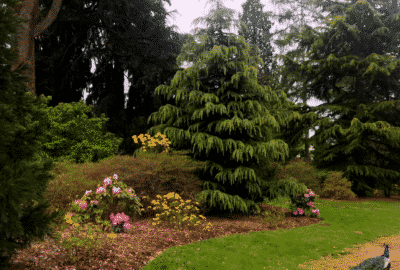Do all lions sound the same?
Wednesday 3rd Mar 2021, 11.22am
If you’ve ever been lucky enough to hear a lion roar (whether that’s at the zoo or in the wild – hopefully at a safe distance!), you’ll know that it’s a truly bone-shaking experience. But do lions have a unique roar, or do they all sound the same? How could knowing this help with conservation efforts? Join us for this episode of the Big Questions podcast as we chat to lion biologist Dr Matthew Wijers – a researcher who has trawled through a whopping 1440 hours of lion audio, all in the name of science!
Emily Elias: I don’t sound like you. My voice is a unique characteristic of me. But is that the same with all other animals, specifically, lions? Can you tell them apart by just using their roars? On this episode of The Oxford Sparks Big Questions podcast, we are heading into the wild and we are asking: do all lions sound the same?
Hello, I am Emily Elias. This is the show where we seek out the brightest minds at the University of Oxford, and we ask them the big questions. For this one we have managed to find a researcher who has spent the past 10 years getting close to lions, maybe too close.
Matthew Wijers: So my name is Matthew Wijers. I am a zoologist. I have been working with WildCRU for the past couple of years, looking at lion behaviour, and also trying to incorporate new technology and trying to understand how we can apply these new technologies to understanding more about, specifically, lion vocal behaviour.
Emily: Matthew has spent a lot of time in the field watching lions but watching has its limits. Obviously, lions are vocal, they make noise to communicate. So Matthew thought, “Hey, let us add an extra element to surveillance and start recording their audio.”
Matthew: So there are two reasons for this. The first point, from a biological perspective, is that it would be really interesting to understand how individual lions are able to recognise the calls of their neighbours and companions, because we already know they can do this. We also know that long distance communication is a really important part of lion social behaviour. So if we can figure out how they convey this identity information to other individuals in their calls, then we can begin to understand how this communication might have evolved over time.
Then secondly, from a practical point of view, it is really important that we monitor lion populations effectively. Their numbers are declining across much of Africa, so if we can identify a lion by its roar, we can potentially design a system that can monitor lions automatically.
Emily: So in theory, this sounds like a really cool idea. But how do you make it work in practice? I mean, this does not sound easy.
Matthew: No, this was really difficult. Initially, we tried to record the roars manually. We went out into the field with a special microphone and recorder and followed individual lions around hoping that they would roar for us. But often they did not cooperate. So it was impossible for us to collect the data we needed using that method.
We ended up forming a partnership with the computer science department at Oxford. They designed a special device for us, which we could attach to a lion collar, and this device recorded audio and movement data so that we could basically get a continuous recording of a lion’s life for about a week. This allowed us to collect this really big dataset of roars that we could use for our analysis.
Emily: So Matthew and his team took it to the field. They were studying group of lions in Zimbabwe, in the Bubye Valley Conservancy, and they managed to get their fancy-schmancy new collars on a pride of lions.
Matthew: So we fitted these devices to eight lions in Zimbabwe, five males and three females. Unfortunately, the females did not roar. We think this is because they had cubs at the time, and were reluctant to give away their position to potentially challenging males that might want to come in and kill the cubs. But we still recorded close to 300 roars from the male lions. So that was a huge dataset and was perfect for what we needed to do the analysis.
Emily: To get those 300 roars Matthew had to wade through 60 days of audio, which is 1440 hours. As somebody who works in audio, let me just tell you, the idea of wading through that amount of tape literally gives me a stress headache.
Matthew: Microphones were recording continuously so we got lots of other sounds on them, like the lions walking, feeding, drinking, all those kinds of things. Actually, lions do not roar that frequently at all, and also only at night. So that meant manually going through all of the days and trying to pick up the individual lion roars, and then label them according to the individual identity. So it was a really long process and also really kind of repetitive. It took a lot of effort and time, but at the end we were able to get this really useful dataset to answer this question.
Emily: So my familiarity with lion roars mainly comes from the start of MGM films. Can you take me through the anatomy of a roar?
Matthew: Sure, let us do that. A typical lion roar is delivered in a bout. Firstly, it starts off with these, kind of, soft moans, perhaps one or two, then it progresses into these really loud, full throated roars and then finishes off with this kind of sequence of short grunts.
You can actually hear in the background, there is another individual calling as well.
Emily: I did not pick that up at all.
Matthew: In fact, the whole lion roar, when you are up close to it, it really rattles your body and your bones. It is an incredible sound.
Emily: Now Matthew is just one person and finding his 300 roars was hard enough. So how do you then tell them apart? Well, he went back to knock on a few doors in the computer science department to see if they could help him make a programme that would do the hard work for him.
Matthew: We looked at these recordings, and we were trying to find if there was a unique fingerprint somewhere in it, you know, that could potentially code for the individual identity. We saw that the fundamental frequency, which is the lowest frequency of that full-throated roar I talked about, had this unique shape for each individual. So we thought, “Let us see if we can train a computer to recognise that shape, and see if that feature itself is actually kind of a distinguishing piece of information.”
So we partnered with the computer science department at Oxford University, and Professor Andrew Markham was very helpful in this regard. He gave us lots of information and advice about how to go about, kind of, developing a machine learning algorithm that could be trained to recognise individual lion roars, and then also how to test it to see whether, you know, we were able to indeed recognise a specific individual from its roar.
Emily: And were you able to?
Matthew: So when I was in the field I thought that I was quite good at being able to recognise two individual males that were living near my house. I was fairly good at understanding, you know, which lion was roaring at the time. But I think that if I was to return there now I would never be able to remember which lion was roaring and be able to distinguish between them.
I think that is where a machine is really useful. In that you can basically set it up so that it is able to distinguish between individual roars continuously.
Emily: Okay, but how hard can it really be to tell two different roars apart? Let us play a little game, shall we?
Matthew: Yes, let us do that.
Emily: I have asked you to send me two roars and I have kind of called this game ‘In the roar’.
Matthew: Okay.
Emily: Puns? No.
Matthew: That sounds great. (Laughter)
Emily: So to see if I can spot the difference I will play two roars and I am going to tell you, through my absolutely trained audio ear, if roar A and roar B belong to the same animal.
So lion roar A: that was a really short one, I am going to play it again.
Lion roar B: I feel like they sound like the same lion, but lion B is a bit sleepy.
Matthew: (Laughter) That is a good way of putting it.`
Emily: Am I right, or is it two different lions?
I am going to go with – same lion.
Matthew: You are unfortunately wrong, Emily. Those are two different lions. Actually you can hear a slight difference in the way the frequency changes over time in the second roar.
That is what’s so amazing, is that even for us it can be really difficult to tell these sounds apart. But for the machine, it is able to, kind of, track that progression and is able to differentiate them quite effectively.
Emily: This machine is much better than me or any human. After weeks of cooking up an algorithm to see if lions had unique voices, the results were very clearly in.
Matthew: So we found that we were able to identify individuals by their roars with approximately 91.5% accuracy, which has never been done before. I think it would be really useful using this method in future because, as I said before, it would be really valuable to have an automatic system that can identify each individual and figure out who is calling where, and also understand which lions have moved from, perhaps, one point to another.
Emily: Could that change the way that lion conservation projects work?
Matthew: Currently, the way we monitor lions is a difficult process. It relies on these unique whisker spot patterns, unique scarring, and those are really difficult to see. Also, it is a really time consuming process. We go into the field, we capture photographs, or camera traps take pictures, and then we have to go through them all to identify them manually.
But if we developed a system that could identify lions by their roars automatically, then it kind of reduces the amount of time a person has to spend in an office going through lots of individual pictures. Yes, ultimately, we could have a machine doing the whole thing.
Also, the other benefit of doing it with roars is that a roar can travel for up to 8kms from the animal, so you are not limited to this really small area of detection. You can potentially detect a lion from really far away. So I think that, going forward, you know, obviously, there is still a lot more work to do, but we could end up with a really effective system that can monitor lions automatically and really effectively.
Emily: There is obviously still a lot of work that Matthew and his team need to perfect, but maybe, in the need not so distant future, a lion’s roar could literally become their calling card.
This podcast was brought to you by Oxford Sparks from the University of Oxford, with music by John Lyons and a special thanks to Matthew Wijers, and the folks at WildCRU who are working on a lot of really neat conservation projects, so you should go check that out. While you are on the internet checking that out, you should also go check out our website, oxfordsparks.ox.ac.uk or find us on any of your social media hangout places @OxfordSparks. Just search for us, we are there, we’re cool. I am Emily Elias, bye for now.





